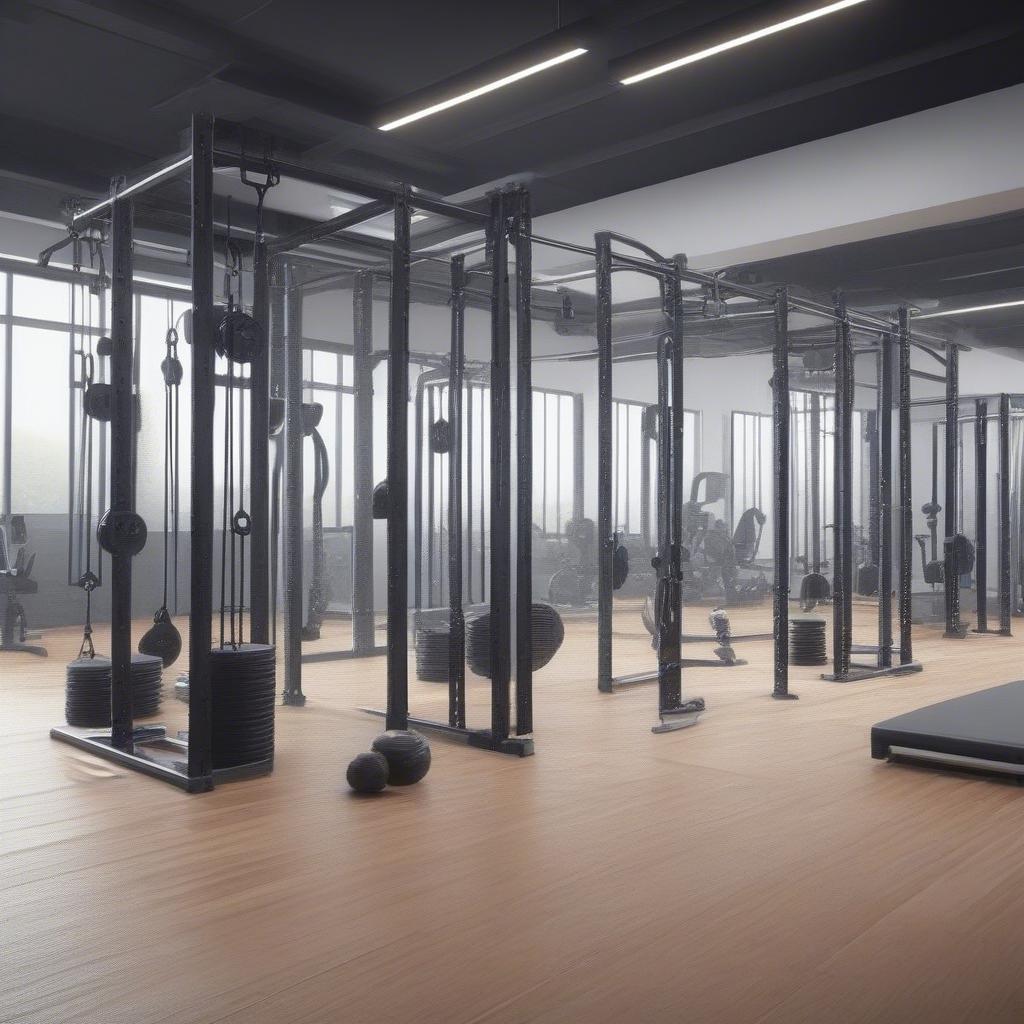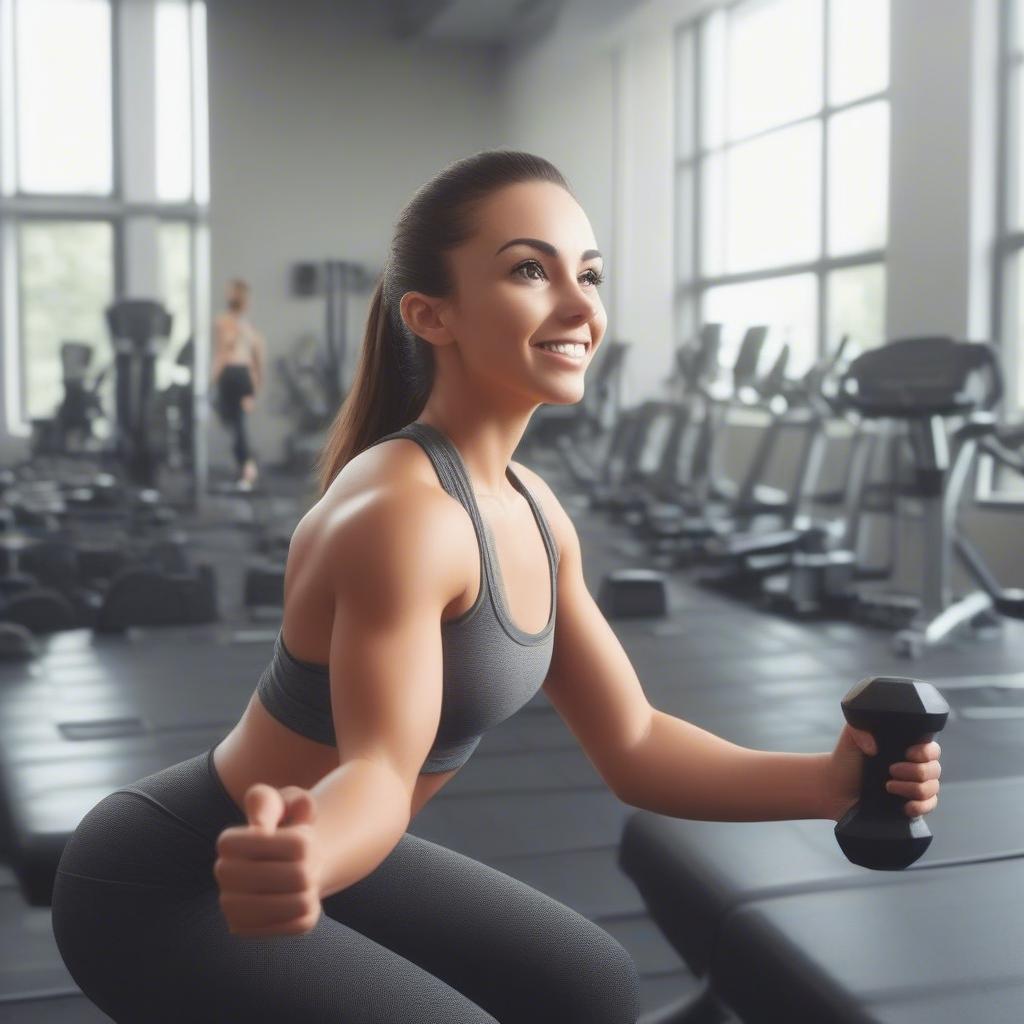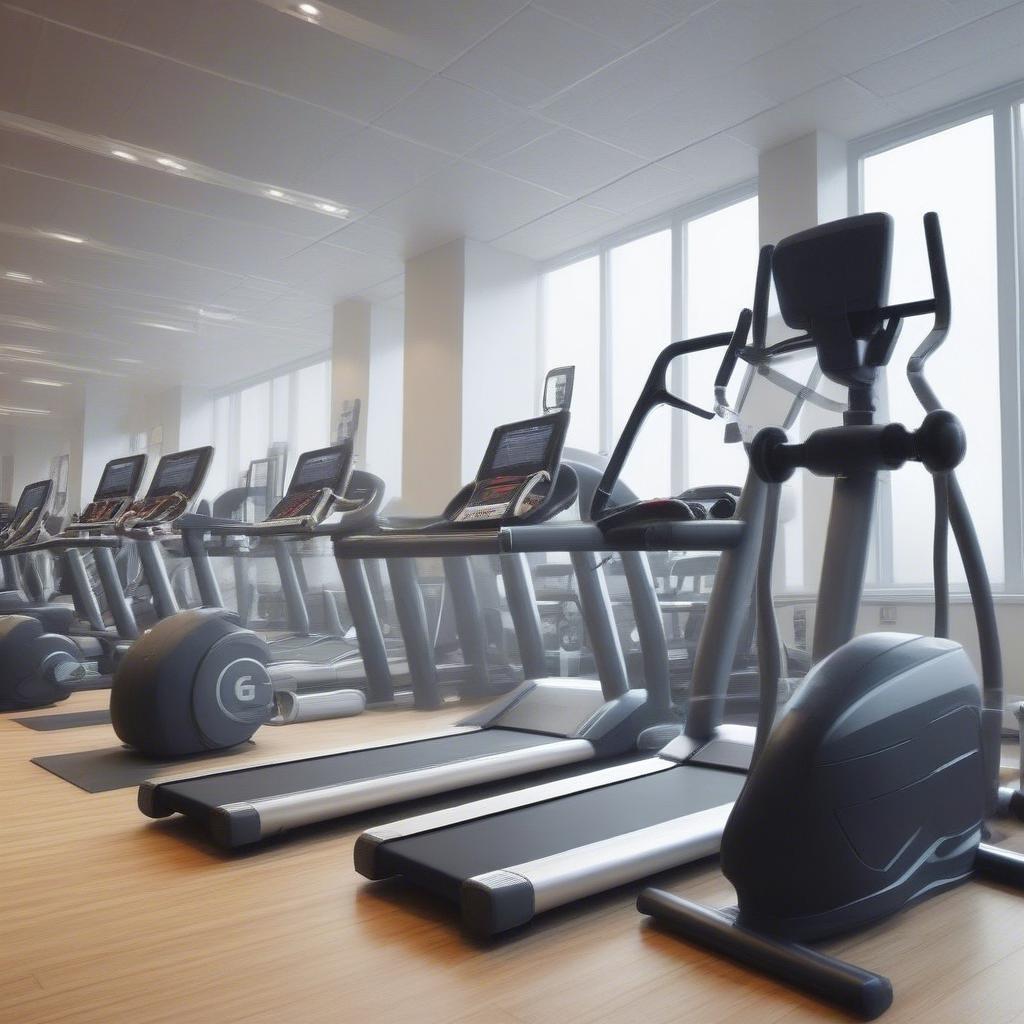
Setting up a functional training area within your gym is more than just a trend; it’s an evolution. It’s about creating a space that empowers your members to move better, feel stronger, and achieve their fitness goals in a way that translates into real-world functionality. But how do you go about crafting such a space? What are the key elements, and what should you consider to make it a success? This comprehensive guide will walk you through every step, ensuring your gym setup includes a thriving fitness zone dedicated to functional movement.
Understanding Functional Training: The Why
Before we dive into the ‘how,’ let’s solidify the ‘why.’ Functional training isn’t about isolating muscles; it’s about training movement patterns. Think of the actions you perform every day: picking up groceries, climbing stairs, playing with your kids. Functional training prepares your body for these real-life demands. It focuses on exercises that mimic these movements, often using multiple muscle groups simultaneously.
- Improved Performance: By training movement patterns, not just muscles, you enhance overall athletic performance and daily functional capacity.
- Reduced Risk of Injury: Strengthening stabilizing muscles and improving movement mechanics minimizes the risk of injuries, particularly those common in everyday life or sports.
- Engaging Workouts: Functional training is dynamic and varied, keeping workouts engaging and preventing plateauing.
- Holistic Approach to Fitness: It promotes a more holistic approach to fitness, targeting flexibility, stability, strength, and cardiovascular health simultaneously.
In short, a dedicated functional training area isn’t just a nice-to-have; it’s a crucial component of a modern gym setup.
Assessing Your Gym’s Needs
Before you start ordering equipment or rearranging the layout, you need to assess your gym’s specific needs. Not all gyms are created equal, and what works for one might not work for another.
1. Member Demographics
- Age Range: Do you primarily cater to a younger, more athletic crowd or an older demographic focused on mobility and stability? This will influence the equipment and intensity levels offered.
- Fitness Levels: Are your members predominantly beginners or experienced athletes? This determines the complexity and progression of exercises you can introduce.
- Training Goals: What are your members’ primary goals? Weight loss, strength gains, rehabilitation, or overall wellness? This will help you tailor the equipment and training programs.
- Preferences: Do a quick survey to see what your members currently enjoy or what they wish they had. This simple step can make sure that you cater to them as well.
2. Available Space
- Square Footage: How much space can you realistically dedicate to the functional training area? Be honest about your constraints.
- Layout: Is the space a rectangular area, a corner, or an awkwardly shaped space? Consider how the layout will affect the flow of movement.
- Ceiling Height: Functional training often involves overhead movements; you need sufficient ceiling height for activities such as rope climbing and pull-ups.
- Floor Material: Rubber flooring is ideal for absorbing impact and providing a safe surface for dropping weights, while still being comfortable for floor-based exercises.
3. Budget Allocation
- Initial Investment: Set a realistic budget for equipment and flooring. Be prepared for potential costs for set up and training of staff.
- Recurring Costs: Consider costs like equipment maintenance, upgrades and staff training.
- Prioritization: Determine which items are essential and which are nice-to-haves. A good start will help you save budget for future expansion.
Planning Your Functional Training Area: The Blueprint
With your needs assessment complete, you can begin planning the layout and equipment for your fitness zone.
1. Layout Considerations
- Open Space: Create a central, open area for dynamic movements, such as jumping, running, and agility drills.
- Perimeter Zones: Designate zones around the perimeter for specific equipment and activities, such as weightlifting, gymnastics movements, and mobility work.
- Traffic Flow: Ensure there’s enough space between equipment to allow for safe movement and minimize congestion during peak hours.
- Clear Visual Markers: Use floor markings, paint, or colored tape to define different zones and make it easy for members to navigate the space.
- Mirrors: strategically placing mirrors can be a great way for gym users to perform self assessments and also provide a greater feeling of space.
- Storage Solutions: Implement efficient storage for equipment like medicine balls, kettlebells, and resistance bands to keep the area tidy and safe.
2. Essential Equipment for Functional Training
- Free Weights:
- Kettlebells: Versatile tools for swings, squats, and carries, improving strength, power, and conditioning.
- Dumbbells: Essential for unilateral strength work, allowing for a wide range of exercises.
- Barbells: For compound movements like squats, deadlifts, and presses, building overall strength and power.
- Weight Plates: A variety of sizes to accommodate different fitness levels and exercise requirements.
- Bodyweight Training Equipment:
- Pull-Up Bars: Ideal for upper body strength and back development, suitable for a variety of fitness levels.
- Suspension Trainers: Great for bodyweight exercises, offering scalability and portability and are suitable for various fitness levels.
- Plyo Boxes: Different heights to increase the intensity of jumps and other exercises for power and explosive training.
- Agility Ladders and Cones: For improving coordination, speed, and agility, with adjustable complexity, suitable for all skill levels.
- Cardiovascular Equipment:
- Rowing Machines: Full-body workout, great for both cardio and strength development.
- Ski Erg: A unique exercise for endurance and power, focusing on upper body and core muscles.
- Jump Ropes: Affordable and versatile for improving coordination, agility, and cardiovascular fitness.
- Other Functional Equipment:
- Medicine Balls: For rotational power, core strength, and dynamic movements.
- Resistance Bands: Versatile for warm-ups, mobility work, and adding resistance to exercises.
- Battle Ropes: Great for cardiovascular conditioning, power, and grip strength.
- Slam Balls: For explosive movements and conditioning.
- Sandbags: Suitable for odd lifting and functional strength movements
- Mobility and Recovery Tools:
- Foam Rollers: For self-myofascial release, reducing muscle soreness and improving mobility.
- Lacrosse Balls: For targeting trigger points and enhancing muscle recovery.
- Resistance Bands: For stretching and flexibility work, improving range of motion.
3. Sample Functional Training Area Layouts
To give you a better idea of how to organize your space, here are a couple of sample layouts:
-
Layout 1: Minimalist Setup
- Open Space: Central area with rubber flooring for dynamic movements.
- Perimeter:
- One corner with a pull-up bar, suspension trainers and plyo boxes
- Another with kettlebells, dumbbells, and medicine balls.
- A third side with rowing machine and a ski erg.
- A final area with mobility tools and resistance bands.
-
Layout 2: Comprehensive Setup
- Open Space: Large, open area with markings for different zones for agility and movement drills.
- Perimeter:
- One section with power racks, barbells and weight plates.
- Another with agility ladder and cones.
- A Third with battle ropes, medicine balls and slam balls.
- A fourth area with a dedicated mobility and recovery space with foam rollers and resistance bands.
- Storage: Wall-mounted racks or shelves to organize equipment.
Implementing Functional Training Programs: Putting it All Together
Having a well-equipped functional training area is only half the battle. You need to implement effective training programs that utilize the space and equipment to their full potential.
1. Program Design Principles
- Progression: Start with simple movements and gradually increase the complexity and intensity as members improve.
- Variety: Include a diverse range of exercises to keep workouts engaging and prevent plateauing.
- Scalability: Provide modifications and variations for each exercise to accommodate all fitness levels.
- Purposeful Movement: Focus on movements that mimic real-life actions and improve overall functional fitness.
2. Sample Training Programs
Here are a couple of examples of functional training programs you could implement:
- Beginner Program (30 minutes):
- Warm-up (5 minutes): Dynamic stretches, light cardio (e.g., jumping jacks, high knees).
- Movement Prep (10 minutes): Bodyweight squats, push-ups (on knees if needed), lunges.
- Workout (10 minutes): Kettlebell swings, plank, medicine ball wall throws, agility ladder drill.
- Cool-down (5 minutes): Static stretching, foam rolling.
- Advanced Program (45 minutes):
- Warm-up (5 minutes): Dynamic stretches, mobility work, light cardio (e.g., rowing).
- Strength (20 minutes): Barbell squats, pull-ups, weighted lunges, overhead press.
- Conditioning (15 minutes): Battle rope slams, plyo box jumps, agility shuttle drills, ski erg intervals.
- Cool-down (5 minutes): Foam rolling, static stretching.
3. Training Styles and Adaptations
- Circuit Training: Combine several exercises in a circuit format with minimal rest between exercises.
- High-Intensity Interval Training (HIIT): Short bursts of intense exercise followed by brief rest periods.
- Small Group Training: Offer focused training sessions with a trainer for a more personalized experience.
- Individual Training: Provide members with personalized workout plans based on their goals and fitness levels.
4. Staff Training
- Certifications: Ensure your trainers have the necessary certifications and knowledge to design and implement effective functional training programs.
- Ongoing Education: Provide continuous education and training to keep your staff up-to-date with the latest trends and best practices.
- Practical Training: Conduct hands-on training sessions with your staff to ensure they are comfortable demonstrating exercises and using the equipment safely.
- Communication Skills: Educate your staff on how to effectively communicate the benefits of functional training to members.
Promoting Your Functional Training Area: Spreading the Word
Once your functional training area is set up and you have training programs in place, you need to promote it effectively to your members and attract new clients.
1. Internal Marketing Strategies
- Gym Tours: Highlight your functional training area during gym tours, demonstrating its versatility and benefits.
- Introductory Sessions: Offer free introductory sessions to members to familiarize them with the area and exercises.
- Success Stories: Share member success stories that demonstrate the effectiveness of your functional training programs.
- Social Media Posts: Showcase the area with images and videos of members actively using the space.
- Challenges and Competitions: Organize challenges or competitions centered around functional movements to engage members.
- Informational Posters: Create informative posters that highlight the benefits of functional training and feature the equipment in your fitness zone.
2. External Marketing Strategies
- Website Updates: Update your website with clear images of the functional area, and describe the benefits and programs.
- Social Media Campaigns: Run targeted ads on social media, emphasizing the unique aspects of your functional training area.
- Local Partnerships: Collaborate with local health professionals, sports teams, and fitness enthusiasts to spread the word.
- Promotional Events: Host open house events showcasing the functional training zone and the community of your gym.
The Importance of a Flexible Fitness Zone
Your functional training area shouldn’t be static; it should be adaptable to the evolving needs of your members.
1. Regular Equipment Upgrades
- New Trends: Stay informed about new trends in functional training and incorporate them into your facility.
- Member Feedback: Regularly collect member feedback to understand their needs and preferences.
- Equipment Rotation: Rotate equipment regularly to keep the area fresh and engaging.
2. Program Evolution
- New Classes and Formats: Introduce new classes and program formats to keep members challenged and engaged.
- Specialized Workshops: Offer workshops focused on specific functional movements, skills, or health outcomes.
3. Creating a Community
- Social Activities: Organize social events and activities to foster a sense of community within the gym.
- Group Challenges: Implement group challenges and competitions that encourage members to engage with each other.
Learn Business and Supporting Businesses
In your quest to build a top-notch functional training area and an outstanding gym setup, support and guidance are crucial. That’s where Learn Business comes into play. Learn Business is dedicated to supporting businesses like yours by providing invaluable resources and templates specifically designed to streamline operations and drive growth.
- Business Plan Templates: Learn Business provides templates tailored to the fitness industry, helping you create a comprehensive business plan to guide your gym’s strategic direction.
- Financial Management Tools: Gain access to tools and templates for efficient budgeting, forecasting, and financial analysis, ensuring your business stays on track financially.
- Marketing Strategy Frameworks: Utilize our marketing frameworks and templates to create targeted campaigns, maximize client acquisition, and enhance member engagement for your fitness zone.
- Operational Efficiency Checklists: Optimize your gym’s operations with checklists designed to improve scheduling, staff management, and customer service.
- Personalized Support: Receive individualized support and consulting to address your specific challenges and goals, helping you build a strong and successful business.
- Legal Templates: Access essential legal templates to ensure your business operates within compliance, such as waivers, contracts, and liability releases.
By leveraging the resources and support from Learn Business, you can navigate the challenges of gym setup with greater ease, create a thriving functional training area, and focus on providing the best experience for your members. We understand the unique challenges and opportunities in the fitness industry, and we are here to help you achieve your business objectives.
Conclusion: Embracing the Power of Functional Movement
Creating a functional training area in your gym is an investment in the long-term success of your business and the well-being of your members. By carefully assessing your needs, planning your layout, selecting the right equipment, implementing effective training programs, and continually adapting to the changing needs of your community, you can create a thriving space that empowers individuals to move better, feel stronger, and achieve their fitness goals. Remember that the journey is ongoing. With the guidance of a dedicated partner like Learn Business, your gym can be a beacon of health, wellness and success. So, embrace the power of functional movement, create an inviting space, and watch your community thrive.



Leave a Reply